Basel: The birthplace of hallucinogenic science
Talk of famous bike rides and you may think of Lycra-clad athletes racing in the Tour de France. But people worldwide also celebrate a much shorter bicycle journey made one April evening in 1943 by a suited 37-year-old man, clattering unsteadily home from work through the ancient streets of the Swiss city of Basel. This two-wheeled journey, you see, heralded the birth of psychedelia.
On the bicycle was pharmaceutical researcher Albert Hofmann, and he had just dosed himself with a new substance known at his lab as Lysergic Acid Diethylamide-25. But to everyone who followed, it was simply LSD.

Basel was founded about 2,000 years ago on the banks of the Rhine (Credit: Carmen Gabriela/Getty Images)
Hofmann described his trippy trip home with an exactness of scientific observation that contrasts with the psychological wildness of the experience. “Kaleidoscopic, fantastic images surged in on me, alternating, variegated, opening and then closing themselves in circles and spirals, exploding in coloured fountains, rearranging and hybridizing themselves in constant flux,” he wrote in his book LSD – My Problem Child. “Every acoustic perception, such as the sound of a door handle or a passing automobile, became transformed into optical perceptions. Every sound generated a vividly changing image, with its own consistent form and colour.”
A very particular town
An ancient Swiss city isn’t perhaps the obvious place to kick-start psychedelia. Switzerland, after all, is a nation stereotyped for pride in discreet banking and punctual trains. Orson Welles’ character Harry Lime delivers a famous quip on its reputation in the classic 1949 film The Third Man: “In Switzerland they had brotherly love, they had 500 years of democracy and peace – and what did that produce? The cuckoo clock.”
Its medieval and Renaissance architecture gives Basel the outward appearance of other lovely middle European towns, but it has a distinctive DNA. Founded 2,000 years ago on the Rhine at the point present-day Switzerland meets both the French and German borders, the river was a watery information highway linking Basel to other European centres of learning. This may explain why Switzerland’s oldest university was founded here in 1460, augmented two centuries later by the world’s oldest public art gallery – now the Kunstmuseum. During the Reformation, the arrival of silk dyers made Basel a place keen to work with chemicals.
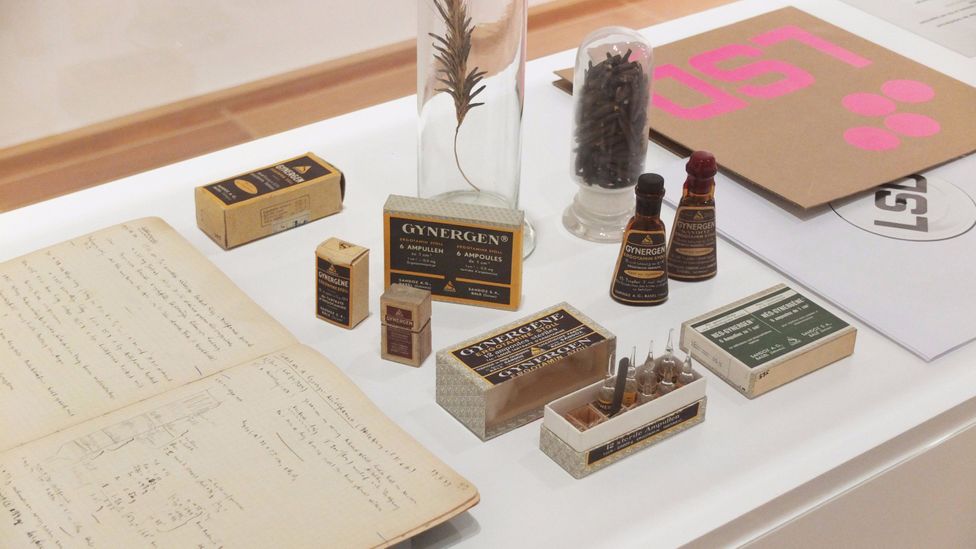
The original minutes of Albert Hofmann’s LSD experiment were exhibited at the Kunstmuseum Basel in 2018 (Credit: Kunstmuseum Basel)
Basel today boasts more museums per person than any other city in Europe. “Basel has always been as a city where education, research and culture are part of the local fabric,” said Josef Helfenstein, director of the Kunstmuseum. “Sharing a border with Germany and France gives the city its special, more relaxed and open-minded spirit,” added Isidora Rudolph, head of Basel’s tourism office. “There’s a certain ‘coolness’ and relaxed groove. Bank director and student alike, everybody loves to jump into the Rhine in summer, and then enjoy the unique savoir vivre [appreciation of life] that makes Basel so different.”
LSD’s mundane origins
Strangely for such a mind-altering compound, LSD’s discovery came during research by pharmaceutical firm Sandoz (now part of Novartis) to find plant-derived circulatory and respiratory stimulants. Hofmann’s job was to isolate, purify and synthesise potentially interesting compounds from ergot, a rye fungus. Several of these involved lysergic acid, including one Hofmann discovered in 1938 – the one filed away as LSD-25.
And LSD’s story might have ended right there as animal tests produced none of the effects Sandoz was looking for, just a strange restlessness in the animal subjects. “The new substance aroused no special interest in our pharmacologists and physicians,” Hofmann wrote. “Testing was therefore discontinued.”
It was five years before a nagging curiosity drove Hofmann to look again at LSD-25, spurred by strange childhood experiences that instilled a sense of mysticism. He described them in the foreword to his book LSD – My Problem Child. “One enchantment…I experienced in childhood, has remained remarkably vivid in my memory ever since. It happened on a May morning…on a forest path on Martinsberg above Baden, Switzerland. As I strolled through the freshly greened woods filled with bird song and lit up by the morning sun, all at once everything appeared in an uncommonly clear light…. It shone with the most beautiful radiance, speaking to the heart, as though it wanted to encompass me in its majesty. I was filled with an indescribable sensation of joy, oneness, and blissful security.”
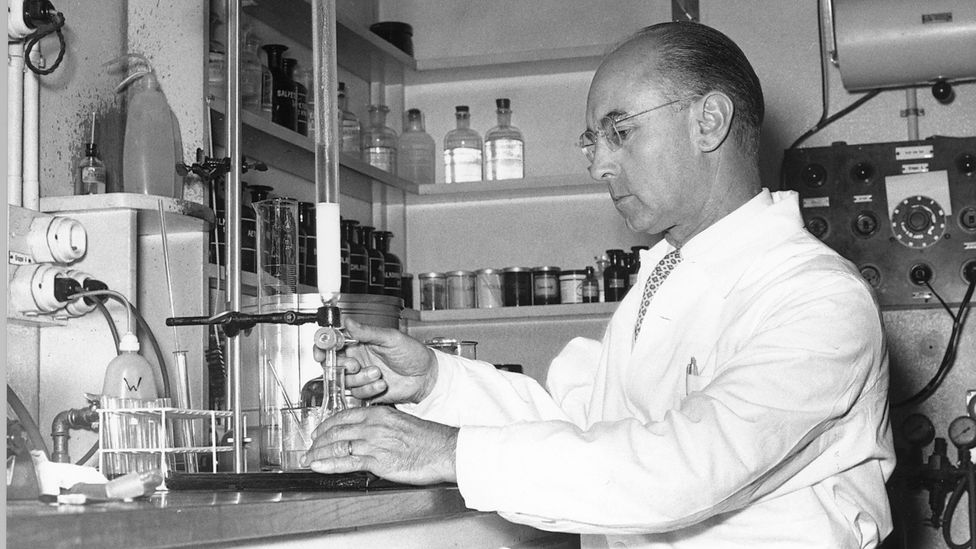
Albert Hofmann synthesised LSD in 1938, while was working as a research chemist at pharmaceutical firm Sandoz (Credit: Novartis)
Hofmann continued: “While still a child, I experienced several more of these deeply euphoric moments on my rambles through forest and meadow. It was these experiences that shaped the main outlines of my world view and convinced me of the existence of a miraculous, powerful, unfathomable reality that was hidden from everyday sight.”
These thoughts clearly remained even after he donned a lab coat, as on the afternoon of 16 April 1943, Hofmann re-synthesized LSD-25 – a decision he explained in his 1996 lecture at the Worlds of Consciousness Conference in Germany as “no more than a hunch! I liked the chemical structure of the substance.” It was during the purification process that Hofmann believed he accidentally got some of the substance into his system.
You may also be interested in:
• The tree that changed the world map
• A 60,000-year-old cure for depression
• A diet that makes you happy and calm
Hit by a strange restlessness and dizziness, he stopped work for the day and went home to have the world’s first acid trip. “I lay down and sank into a not unpleasant intoxicated-like condition, characterised by an extremely stimulated imagination,” he wrote. “In a dreamlike state… I perceived an uninterrupted stream of fantastic pictures, extraordinary shapes with intense, kaleidoscopic play of colours.”
When his Sandoz colleagues could offer no explanation, Hofmann decided to take a deliberate dose of LSD-25 three days later to experience its effects more consciously – unaware at the time that what he thought was a small dose (250 micrograms) was actually rather a lot.
LSD goes global
Once Europe emerged from World War Two, Sandoz marketed their new compound to researchers worldwide under the brand name Delysid. And for more than two decades, LSD was revealed as something of a wonder drug to treat anxiety, depression and psychological trauma. Between 1943 and 1970, Oxford University Press estimated it generated almost 10,000 scientific publications, earning the tag of the most intensively researched pharmacological substance ever.
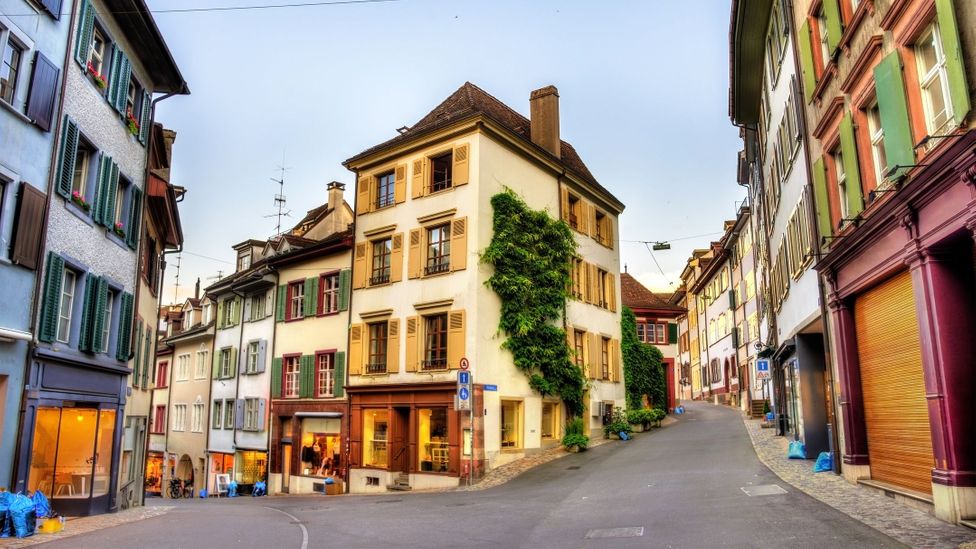
Basel’s Old Town is one of the best-preserved and most beautiful in Europe (Credit: Leonid Andronov/Getty Images)
In 1950s Cold War America, meanwhile, the CIA experimented with LSD as a brain-scrambling weapon in a project codenamed MK-ULTRA. They funded studies at universities like Columbia and Stanford, before deciding LSD’s effects were simply too unpredictable for counter intelligence. At which point, creatives took up Hofmann’s magical substance and put it at the heart of 1960s “acid” counterculture, at a time when it was legal and relatively easy to obtain.
LSD opened new doors of perception for diverse folk – from author Aldous Huxley and counterculture guru Timothy Leary to music legends like The Beatles, Jimi Hendrix and Bob Dylan. The Animals’ 1967 song A Girl Called Sandoz openly sang its praises in lines like: “Well I met a girl called Sandoz, and she taught me many, many things”. On screen, LSD’s influences infused films as different as Easy Rider and The Beatles’ animation Yellow Submarine.
But the wheels came off the LSD bicycle when, in a political and moral panic over the drug’s popularity with Vietnam War draft dodgers and “un-American” counterculture – epitomised by Timothy Leary’s call for young people to “turn on, tune in, and drop out” – both the US and UK made recreational use of the substance illegal in the late 1960s, before hardening restrictions to include any government-sanctioned research through laws like 1970’s Controlled Substances Act in the US and Britain’s 1973 Misuse of Drugs Act. But research into psychedelics was kept alive by a scattering of scientists worldwide, providing the seed for a surge of renewed interest as the new millennium dawned.

Bicycle Day on 19 April commemorates Albert Hofmann intentionally taking LSD for the first time (Credit: Ivan Aleshin/Getty Images)
Bicycle Day
During LSD’s 1960s and ‘70s heyday, micro doses often bore stylised illustrations of Hofmann on his Basel bicycle, but it wasn’t until 1985 that Illinois college professor Thomas B Roberts suggested people worldwide inspired by LSD – both scientifically or creatively – actively celebrate Albert’s 1943 two-wheel ride home each April.
Typically, diverse celebrations mark Bicycle Day in Basel itself, combining trippy music, art events and science conferences showcasing the latest research into psychedelic compounds, plus bike rides inspired by Hofmann’s transformative two-wheeled trip in 1943. Sandra Lang, a PhD researcher into the sociology of science, has run a guided Bicycle Day tour in Basel regularly in recent years, adding a colourful history of relevant chemistry information en route.
“I have reconstructed the route Albert Hoffmann took in 1943,” she said. “We usually start at the main gate of Novartis Campus – from the rear gate you can have a look inside the campus and see the lab building where the LSD self-experiment started off – at Lichtstrasse 35. Then you ride along Luzernerring, Wasgenring, Holeestrasse down to Bottmingen, where Albert Hofmann used to live.”
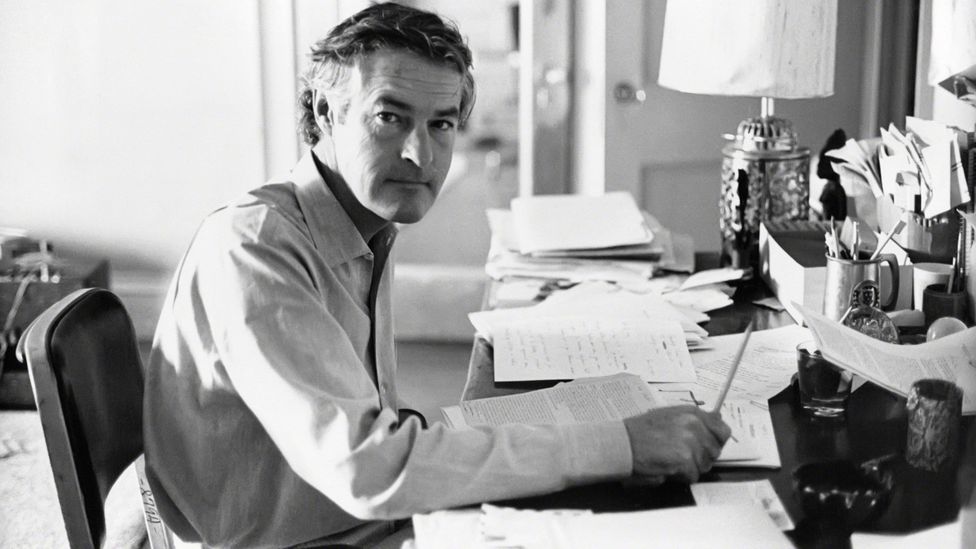
American psychologist and author Timothy Leary was a leading advocate for the use of LSD (Credit: Images Press/Getty Images)
Sadly, the actual house on Oberwilerstrasse where Hofmann experienced his world-changing LSD trips has been torn down, but the city renamed a nearby lane Albert-Hofmann-Rain in his honour in 2006.
Lang recommends riding the approximately 8.5km route on a weekend, when car traffic – almost non-existent during Hofmann’s time due to wartime restrictions – is far less. As a perfect complement, delve further into Basel’s chemical history at the city’s Pharmaceutical Museum.
A new light on LSD
The 21st Century has seen a return to scientific research into LSD, with its therapeutic potential seen to outweigh ill-informed anti-drug laws. A driving force behind this renewal is Amanda Feilding, an English aristocrat (Countess of Wemyss and March) who is recognised today as a global leader in drug policy reform and co-ordinating research into psychedelics.
In 1996, Feilding founded the Beckley Foundation – initially, the Foundation for Further Consciousness – in Oxford, and it has since jump-started research not just into LSD, but also psilocybin (found in magic mushrooms), MDMA (ecstasy) and 5MeO-DMT (found in secretions from the Bufo alvarius toad of northern Mexico and some southern US states).

Amanda Feilding began experimenting with LSD in the mid-1960s and is now working to change drug policy across the world (Credit: The Beckley Foundation)
The Beckley Foundation teamed with London’s Imperial College to initiate the first-ever brain imaging study with LSD, published in 2016. “The first images of the human brain on LSD revealed that it can help in ‘resetting’ the brain to overcome maladaptive pathways,” said Feilding.
In the US, meanwhile, research summed up by MAPS (Multidisciplinary Association for Psychedelic Studies) found LSD and other psychedelics can help problems as different as severe depression, searing cluster headaches and terror of dying among terminally-ill patients.
Fittingly, Switzerland is a leader in modern LSD research, including at Basel’s University Hospital, where Matthias Liechti’s research into psychedelics is revealing LSD’s ability to calm terrifying emotions associated with PTSD.
Humans have always taken substances that transform their feelings or impressions of the world, and some have serious negative effects. Medical News Today summed up some of the risks related to LSD in a 2017 article: “The danger lies in the unpredictability of the ‘trip’. The potency of the drug is unreliable, and individuals react differently to it. The user’s mindset, surroundings, stress level, expectations, thoughts and mood at the time the drug is taken, strongly influence the effects of the drug.”
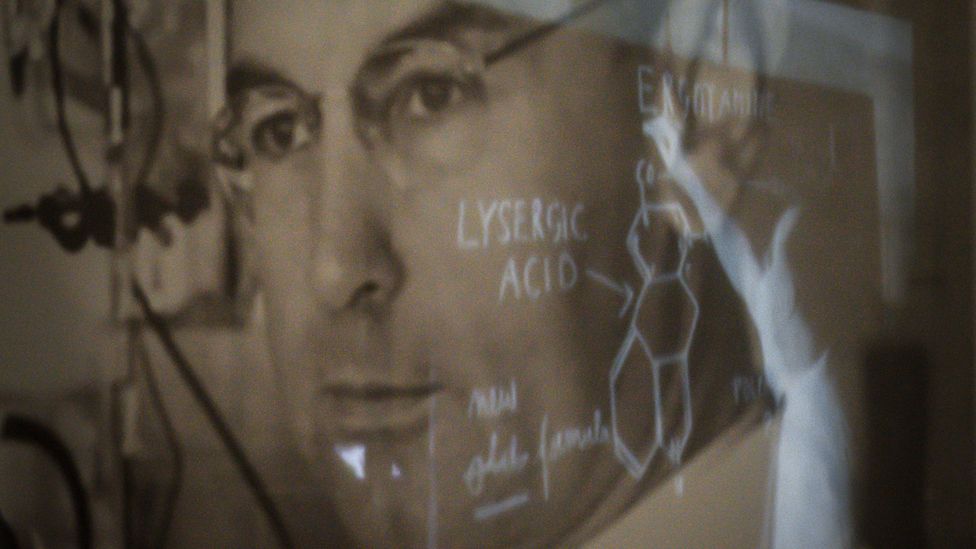
In 2018, the Swiss National Library in Bern hosted an exhibition entitled “LSD, the 75 Years of a Problem Child” (Credit: Fabrice Coffrini/Getty Images)
For some – particularly people with underlying issues of psychosis, anxiety or depression – LSD can act as a terrifying intensifier of those feelings. Even Hofmann experienced some scary moments, including perceiving a kindly female neighbour who knocked on his door during one of his famous “trips” as a malevolent witch figure.
But increasing research is suggesting the huge positive potential of LSD taken in an appropriate setting is significantly stronger than the risk of “bad trips” and long-term harm that may afflict some – just as the number of people who happily consume alcohol as a treasured pleasure far outweighs the number for whom it triggers violence, depression and terrible addiction.
And in a world where pain and terror are all too common, LSD’s transformational powers seem timely.
“LSD is such a subtle and misunderstood compound,” said Feilding. “As humans enter an era of general crisis, with epidemic levels of mental health problems, an ever-worsening ecological and socio-political state of affairs and a deepening spiritual vacuum, it is vital that we can better adapt our thoughts and behaviour.”
Time perhaps to open our minds to new ways.
Places That Changed the World is a BBC Travel series looking into how a destination has made a significant impact on the entire planet.
Join more than three million BBC Travel fans by liking us on Facebook, or follow us on Twitter and Instagram.
If you liked this story, sign up for the weekly bbc.com features newsletter called “The Essential List”. A handpicked selection of stories from BBC Future, Culture, Worklife and Travel, delivered to your inbox every Friday.


